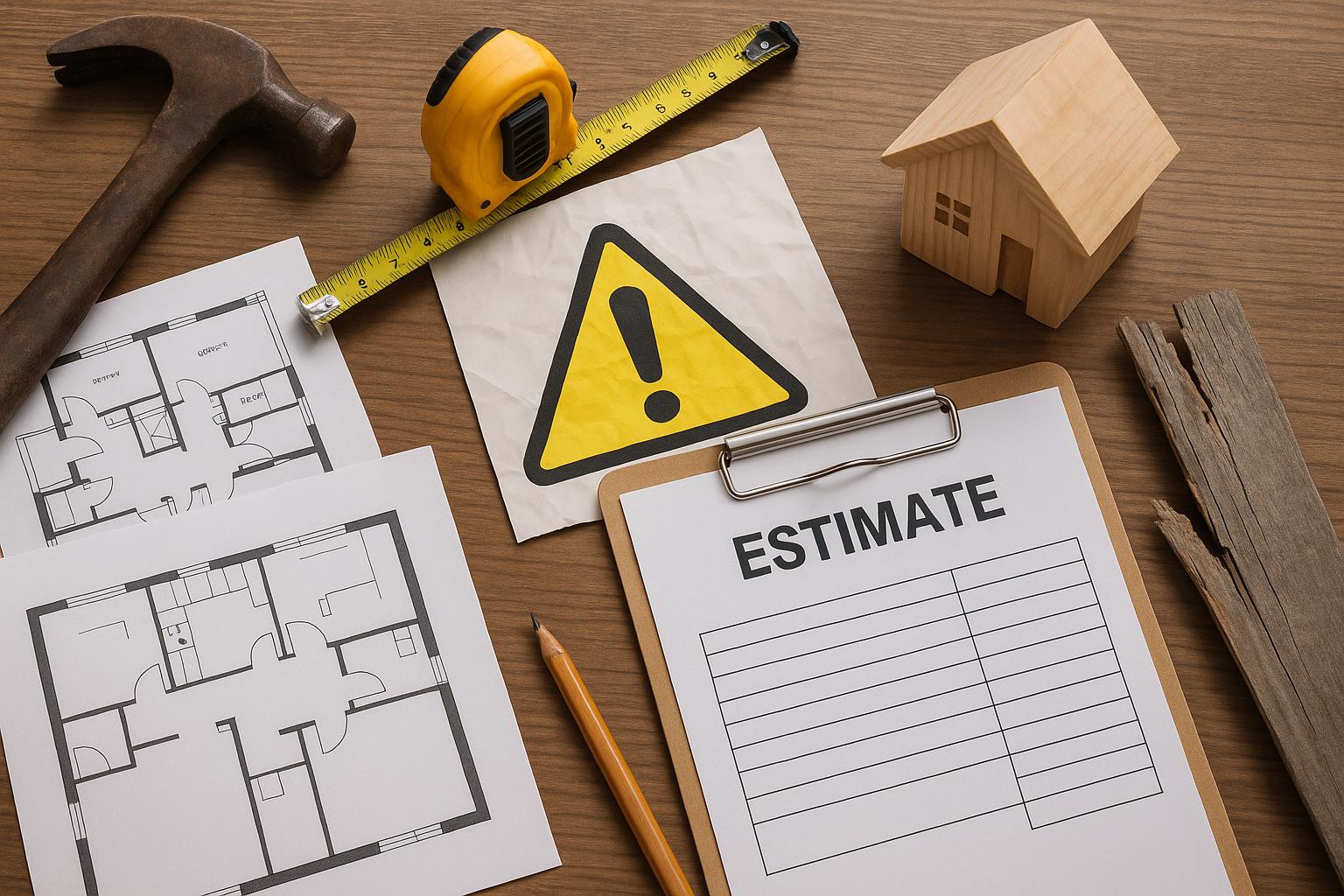Renovation projects can be exciting, but they often come with a range of challenges that can derail your plans. As you commence on transforming your home, it’s imperative to be aware of common pitfalls that can lead to frustration and unexpected costs. From overlooking necessary permits to underestimating budget requirements, you’ll want to navigate these potential missteps with care. In this post, you’ll discover key pitfalls that can affect the success of your renovation and how you can avoid them to ensure a smoother and more rewarding experience.
Common Budget Pitfalls
Your home renovation budget can quickly spiral out of control if you’re not wary of common pitfalls. Many homeowners find themselves overspending due to a lack of detailed planning and oversight. Understanding these budget pitfalls will help you stay on track and ensure your renovation project remains financially feasible at Thomson View.
Underestimating Costs
Underestimating costs is a frequent mistake in home renovations. You may only consider the obvious expenses like materials and labor, overlooking additional factors that can lead to increased costs. Without a comprehensive budget, you may find yourself facing financial strain as expenses accumulate unexpectedly.
Ignoring Hidden Expenses
Pitfalls arise when you ignore hidden expenses that can arise during a renovation project. These unexpected costs can include permits, utility installation, or even the price of moving furniture temporarily. If you don’t account for these hidden fees, they can quickly add up and cause your budget to exceed the original estimate at Rivelle Tampines.
In fact, hidden expenses can be a significant part of your overall renovation costs. Factors such as structural repairs, adjustments to plumbing or electrical systems, and even inspection fees are often overlooked until it’s too late. To safeguard your budget, take the time to plan for these potential extra costs by consulting with professionals and doing thorough research before you begin your renovation project.
Choosing the Wrong Contractors
Now, selecting the right contractor can greatly influence the success of your renovation project. If you fail to do your homework, you could end up with a contractor who doesn’t have the necessary skills or experience. This can lead to delays, budget overruns, and even damage to your home. Prioritize hiring reputable professionals who align with your vision and can execute with quality craftsmanship.
Lack of Research
With the plethora of contractors available, neglecting to conduct thorough research can lead to hiring someone unqualified or unreliable. Take the time to read reviews, ask for references, and check credentials. This step is key to ensuring your renovation runs smoothly.
Poor Communication
Against a backdrop of rising expectations, clear communication is crucial for a successful renovation. When discussions are vague or misinterpreted, it can lead to costly mistakes and frustration on both sides. Ensuring that your contractor understands your vision, timelines, and budget is vital for a seamless process.
And, frequent check-ins can help mitigate misunderstandings. Setting clear expectations from the start allows you to clarify important details before any work begins. Moreover, regular updates throughout the project keep both parties aligned. Make sure you establish a communication plan early on, whether it’s through emails, phone calls, or in-person meetings. Taking these steps can significantly enhance your renovation experience.
Neglecting Permits and Regulations
Some homeowners underestimate the significance of securing necessary permits and adhering to local regulations during a renovation. While it may seem easier to bypass these steps, neglecting them can lead to costly repercussions down the line. Understanding the importance of proper documentation from the start will save you headaches and financial strain as your project progresses.
Importance of Compliance
To ensure a smooth renovation process, compliance with local building codes and regulations is necessary. These rules are designed to safeguard your property, maintain structural integrity, and protect health and safety. By adhering to these standards, you not only avoid legal issues but also enhance the value of your home.
Consequences of Skipping Permits
Neglecting permits can result in serious ramifications that you may not anticipate. If your renovation doesn’t meet local building codes, you could face fines, forced removal of work, or even legal action from your municipality. Additionally, unpermitted projects may pose risks during property transactions, as buyers typically shy away from homes with unresolved compliance issues.
Further, skipping permits can lead to additional expenses that outweigh the initial savings. In some cases, authorities may require you to hire professionals to bring your renovation up to code after the fact, which can double your renovation costs. Inspections may also unveil unsafe structures that need immediate attention, leading to further delays and financial strain. By prioritizing permits and regulations, you protect both your investment and peace of mind throughout your home renovation journey.
Overlooking Design and Functionality
Keep in mind that a successful home renovation balances both design and functionality. Focusing solely on aesthetics can lead to impractical spaces that fail to accommodate your lifestyle needs. Ensure that your choices not only please the eye but also enhance the usability of your living spaces. An effective design should seamlessly blend beauty with purpose, creating a harmonious environment for you and your family.
Prioritizing Aesthetics Over Usability
Overlooking functionality in favor of aesthetics can lead to dissatisfaction with your renovation. While visually appealing elements may attract attention, if they do not serve a practical purpose, you may find yourself regretting those choices. Aim for a balance that prioritizes comfort and usability while still achieving the visual appeal you desire.
Failing to Plan for Future Needs
Any renovation that does not consider your future needs can become a costly oversight. As your circumstances change, such as family size or lifestyle shifts, your home’s functionality must adapt accordingly. Neglecting this foresight may require you to undergo additional renovations sooner than anticipated, increasing both time and financial investment.
A flexible approach to planning will help you create spaces that accommodate various life stages. For instance, consider adding features that can evolve with your family’s needs, such as multipurpose rooms or storage solutions. By envisioning potential changes in your life, you can avoid common pitfalls and ensure your renovation stands the test of time, ultimately saving you time and money down the road.
Skimping on Quality Materials
To achieve the best results in your home renovation, investing in quality materials is necessary. Cutting corners may initially save you money, but it often leads to poor craftsmanship and frequent repairs. When you choose cheaper options, you risk compromising durability, leading to costly replacements down the road. Ensuring that you select top-notch materials can significantly impact your home’s appearance and longevity.
Long-term Costs of Cheap Materials
Long-term savings may seem appealing, but opting for cheap materials can lead to unexpected expenses. Initially, you might enjoy lower upfront costs, but the ongoing maintenance and eventual replacement of inferior products can quickly add up, negating any initial savings. Investing in quality materials reduces the frequency of repairs and helps preserve the integrity of your home.
Impact on Home Value
One of the most important aspects to consider is how your material choices influence your home’s value. High-quality materials enhance your property’s appeal and can boost its market value. On the other hand, if buyers perceive lots of substandard finishes or repairs, they may be deterred or offer significantly lower prices than expected.
But investing in quality materials not only ensures a beautiful and functional living space but also provides lasting value when it’s time to sell. Buyers are often willing to pay a premium for homes that feature durable, high-end materials, as they symbolize quality craftsmanship and longevity. By prioritizing superior materials, you position your home as a desirable option in the market, leading to a higher return on your investment.
Ignoring Timing and Seasonality
Once again, overlooking the timing of your home renovation can lead to significant setbacks and expenses. Seasonal fluctuations can impact everything from material availability to labor costs, affecting your overall project timeline and budget. It’s crucial to plan your renovations when it aligns with both market trends and your personal schedule to avoid unnecessary stress and complications.
Seasonal Labor Costs
One of the most important factors in renovation planning is understanding seasonal labor costs. During peak seasons, tradespeople often charge higher rates due to increased demand. If you can schedule your renovations during off-peak times, you can save a substantial amount on labor costs, allowing you to allocate more of your budget toward materials or design features.
Impact of Weather on Renovations
Between the uncertainties of rain, snow, and extreme temperatures, the weather can significantly impact your renovation timeline. If you’re planning outdoor work or seasonal installations like roofing or siding, inclement weather can delay your project and lead to additional costs.
Plus, weather conditions can also affect the quality of work done during renovations. For instance, extreme heat can cause materials to warp or crack, while freezing temperatures can hinder vital processes such as curing. By carefully considering the weather patterns in your region and scheduling your project accordingly, you can avoid many common pitfalls and ensure your renovations proceed smoothly.
Final Words
Drawing together your home renovation plans, it’s vital that you avoid common pitfalls that can derail your project. By keeping a close eye on budgeting, timelines, and contractor communication, you can enhance your chances of a successful renovation experience. Pay attention to details like permits and structural integrity to ensure safety and compliance. Ultimately, being proactive about these potential issues will help you create the home of your dreams while minimizing stress and additional expenses.

